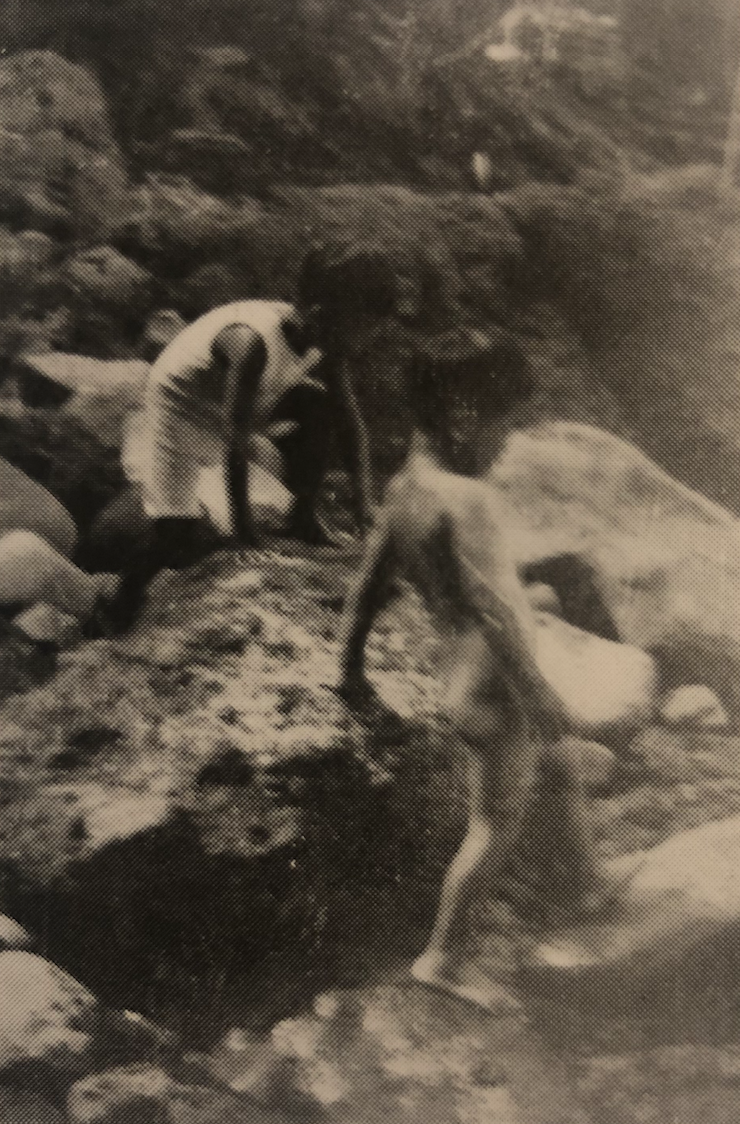<b>AMONG THE ROCKS</b> / Koshiro Onchi1929<b>SOLD</b></em>
ARTIST: Koshiro Onchi (1891-1955)
TITLE: Among the Rocks
MEDIUM: Woodblock
DATE: 1929
DIMENSIONS: 35 1/2 x 29 3/4 inches
PROVENANCE: Juda Collection
CONDITION: No condition problems to note
LITERATURE: Kubo Sadajiro, ed. Prints of Onchi Koshiro, 1975, pl. 131
ARTIST: Koshiro Onchi (1891-1955)
TITLE: Among the Rocks
MEDIUM: Woodblock
DATE: 1929
DIMENSIONS: 35 1/2 x 29 3/4 inches
PROVENANCE: Juda Collection
CONDITION: No condition problems to note
LITERATURE: Kubo Sadajiro, ed. Prints of Onchi Koshiro, 1975, pl. 131
ARTIST: Koshiro Onchi (1891-1955)
TITLE: Among the Rocks
MEDIUM: Woodblock
DATE: 1929
DIMENSIONS: 35 1/2 x 29 3/4 inches
PROVENANCE: Juda Collection
CONDITION: No condition problems to note
LITERATURE: Kubo Sadajiro, ed. Prints of Onchi Koshiro, 1975, pl. 131
Details
Though abstraction captured Koshiro Onchi’s imagination, he turned to representational subjects in the late 1920s in earnest as a means to promote Sosaku Hanga and gain more public acceptance for this misunderstood genre. Onchi believed abstraction best suited him, as the style was ideal for conveying the wide ranges of the artist’s emotional experience. However, abstraction was not understood in Japan at this time and Onchi knew he had to take another avenue in the struggle to legitimize this art form. Turning away from abstraction posed a problem for Onchi. The obvious question must have plagued him—how does one charge representational woodblock prints with emotions? Onchi resolved this problem by developing a highly creative style where the emphasis was on both the design and the method in which the print was executed. This style had a strong painterly effect, which also helped Onchi exhibit hanga in the chief art exhibitions sanctioned by the conservative government, whose taste was primarily Western-style oil painting.
Among the Rocks was created primarily for the Imperial Academy of Fine Arts exhibition in 1929. It was the first time a woodblock print artist was accepted into this prestigious art exhibition. This work hung side-by-side with oil paintings executed in the convention of Western-style painting. The print was Onchi’s first large-scale work (beyond the confines of the oban format), done in a size similar to oil paintings. This work was executed in his distinctive spontaneous wet-like printing technique, which read like an oil painting. The design was based on a photo taken by Onchi in the summer of 1926 of his two sons playing in sunshine. See image below. When the print was produced, one of Onchi’s sons had already passed away. The print conveys feelings of nostalgia and a longing for a time of innocence lost.
Connoisseur's Note
This design is the earliest large-scale example of Onchi’s spontaneous wet-like printing. The design is built-up by layers of colors that vibrate and animate the subjects. This technique was radical for the time. The tradition of woodblock printing was previously known for precision, and Onchi’s printing technique turned this tradition on its head. Though the design was certainly important, the emphasis now lay with the method of printing that captured the artist’s emotional state at the time of production.
Among the Rocks is one of Onchi’s earliest masterpieces. It is known in only six impressions and all works are printed decidedly differently. For Onchi, woodblock printing was not only a means of replication, but another important medium for artists to explore. Onchi is known for producing dozens of mono-prints in his career and designs known in multiple impressions, such as this one, were executed as if they were standalone works onto themselves.







